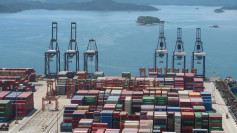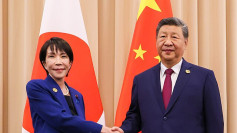Tensions between the United States and China escalated this week as Beijing condemned a U.S. Navy surveillance flight through the Taiwan Strait, accusing Washington of stirring regional instability. The U.S. Navy's 7th Fleet confirmed that a P-8A Poseidon maritime patrol aircraft conducted a transit of the strait on Tuesday, flying in what the Pentagon described as international airspace.
China responded swiftly, deploying military aircraft and naval forces to shadow the U.S. flight. A statement from the People's Liberation Army (PLA) Eastern Theater Command criticized the transit as a "provocative" move, claiming it jeopardized regional peace and stability. "The troops of the PLA Eastern Theater Command will remain on high alert at all times and resolutely safeguard China's national sovereignty as well as regional peace and stability," said PLA spokesperson Senior Capt. Li Xi.
The U.S. Navy defended the mission, emphasizing its commitment to maintaining navigational rights and freedoms in the Indo-Pacific. "By operating within the Taiwan Strait in accordance with international law, the United States upholds the navigational rights and freedoms of all nations," the 7th Fleet said in a statement. "The aircraft's transit of the Taiwan Strait demonstrates the United States' commitment to a free and open Indo-Pacific."
The flight occurred one day after U.S. Defense Secretary Lloyd Austin held a virtual meeting with his Chinese counterpart, Defense Minister Dong Jun. The Pentagon said the conversation focused on U.S.-China defense relations and broader regional security concerns. Austin reiterated the U.S. stance that it would "continue to fly, sail, and operate - safely and responsibly - wherever international law allows."
China, which claims sovereignty over Taiwan and jurisdiction over the Taiwan Strait, views U.S. military activity in the area as an infringement on its territorial integrity. Colonel Cao Jun, a spokesperson for the PLA's Eastern Theater Command Air Force, dismissed the U.S. flight as "public hype," accusing Washington of distorting international legal principles to mislead global perceptions.
Taiwan's Ministry of National Defense confirmed that the P-8A Poseidon flew from the north to the south of the strait and noted that Taiwanese forces monitored the situation. "The situation was as normal," the ministry stated. This marks the latest in a series of U.S. military transits through the Taiwan Strait, which occur roughly once a month. Such operations consistently draw sharp criticism from Beijing.
Chinese military responses to U.S. missions in the region have intensified in recent months. Last month, Beijing conducted a large-scale military drill involving a record 153 aircraft, 14 naval vessels, and 12 Chinese government ships near Taiwan in response to what it perceived as provocations. On Monday, Taiwan reported spotting a Chinese surveillance balloon over waters north of the island.
The Biden administration has worked to reestablish military-to-military communication with China, a critical channel for avoiding misunderstandings in volatile situations. Following a meeting in California in November 2023, President Joe Biden and Chinese President Xi Jinping agreed to resume direct communication between theater commanders, a step welcomed by defense analysts. Secretary Austin highlighted the importance of these measures during his recent meeting with Dong Jun, describing open lines of communication as vital to maintaining stability.
The Taiwan Strait, a 110-mile-wide waterway separating Taiwan from mainland China, remains a flashpoint in U.S.-China relations. While the U.S. and Taiwan view the strait as international waters, China asserts control over the area. Washington has consistently rejected Beijing's claims, citing international law to justify its presence in the region.






